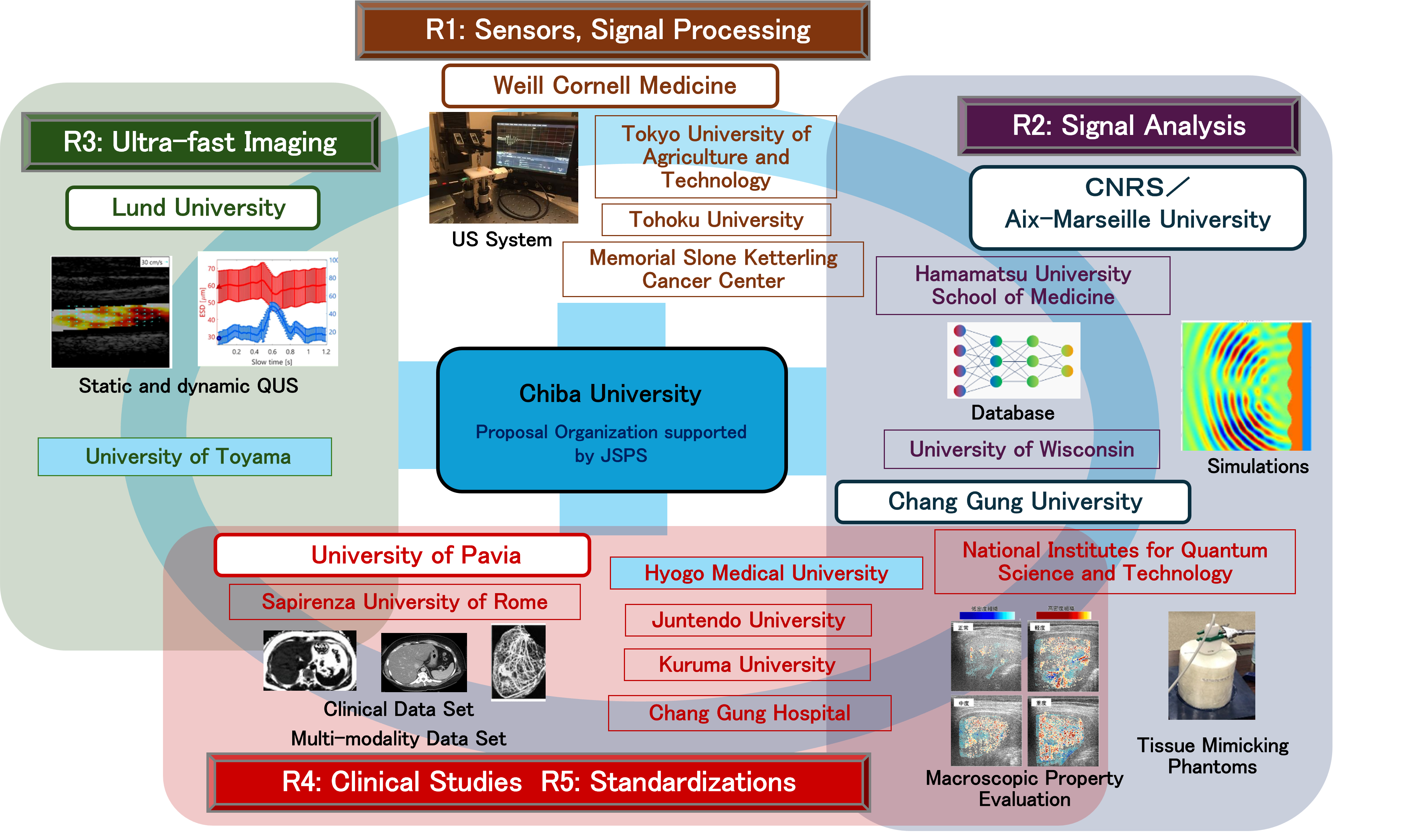JSPS Core-to-Core Program
Creation of ultrasound pathology based on biological wave physical properties
JSPS Core-to-Core Program
Creation of ultrasound pathology based on biological wave physical properties
Ultrasound is applied in a wide range of clinical fields because it can be used to obtain macroscopic information about the internal structure of the body and its dynamics in real time without placing a burden on the body. In recent years, there has been progress in the development of quantitative ultrasound (QUS) technology, which quantifies the differences between the properties of the tissue being observed and those of normal tissue in relation to the degree of disease progression. In Japan, several QUS methods have been approved for insurance coverage. On the other hand, in many cases, microscopic pathological diagnosis using a microscope is necessary to make a definitive diagnosis of a disease. By linking the relationship between microscopic and macroscopic characteristics of biological tissue using physical properties as the axis, it is possible to evaluate tissue characteristics using ultrasound alone (TC: tissue characterization), and it is expected that true QUS will be realized, and the ability for diagnosis and treatment will improve dramatically.
To date, the participants in this project have developed a number of systems and signal processing and analysis technologies for understanding the acoustic properties of biological tissues at multiple scales, from individual cells to internal organs, and have also promoted international collaborative research on the association between QUS evaluation values in clinical data and biochemical and pathological characteristics.
In this project, we will integrate these elements, strengthen and build networks with influential institutions that lead each field in Japan and overseas, and enhance mutual capabilities through joint research, seminars, and other activities, while also training young researchers through various activities. During the project period, we will aim to establish next-generation ultrasound diagnostic methods for liver diseases in particular.
| Country | Institutes |
|---|---|
| USA: | Weill Cornell Medicine, University of Wisconsin, Memorial Sloan Kettering Cancer Center |
| France: | Aix-Marseille University / CNRS |
| Taiwan: | Chang Gung University, Chang Gung Memorial Hospital |
| Sweden: | Lund University |
| Italy: | University of Pavia, Sapirenza University of Rome |
| UK: | University of Glasgow |
| Japan: | Chiba University, University of Toyama, Hyogo Medical University, Tohoku University, Tokyo University of Agriculture and Technology, Juntendo University, National Institute of Quantum Science and Technology, Kurume University, Iwate Medical University, Yokohama National University |

| Topics | Main participating countries |
|---|---|
| Development of ultrasonic measurement systems: | USA, Sweden, UK, Japan |
| Improving the accuracy of ultrasonic signal analysis methods: | France, USA, Taiwan, UK, Japan |
| Quantitative diagnostic applications of ultra-high-speed ultrasonic measurement: | Sweden, USA, France, Japan |
| Accumulation of clinical data and pathological/physiological verification: | Italy, Taiwan, USA, Japan |
| Database construction, indexing and standardization: | Italy, Taiwan, USA, Japan |
The Japan Society for the Promotion of Science (JSPS) is a public interest incorporated foundation that supports research and education in Japan and overseas. The JSPS's mission is to promote the advancement of science and technology and the enrichment of human culture by supporting research activities and providing research grants to researchers in Japan and overseas, and to contribute to the development of science and technology in Japan and overseas by promoting international exchange and cooperation in science and technology. The JSPS also aims to develop human resources who will play a central role in the next generation of research and education.